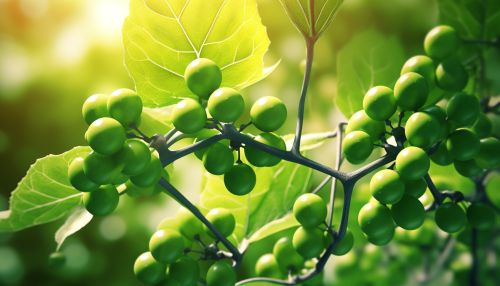The Biological Mechanisms of Plant Photosynthesis
Introduction
Photosynthesis is a fundamental biological process that allows plants to convert light energy, usually from the sun, into chemical energy in the form of glucose. This process plays a crucial role in the energy flow of life on Earth. This article will delve into the biological mechanisms of plant photosynthesis, discussing the various components, stages, and factors that influence this process.


Light-Dependent Reactions
The first stage of photosynthesis is the light-dependent reactions. These reactions occur in the thylakoid membranes of the chloroplasts and are driven by light energy. The light-dependent reactions can be divided into two parts: photosystem II and photosystem I.
Photosystem II
Photosystem II is the first part of the light-dependent reactions. It is named so because it was the second photosystem to be discovered, not because it comes second in the process. In photosystem II, light energy is absorbed by chlorophyll and other pigments, exciting their electrons to a higher energy state. These high-energy electrons are then passed down an electron transport chain, releasing energy that is used to pump hydrogen ions into the thylakoid space, creating a proton gradient.


Photosystem I
The second part of the light-dependent reactions is Photosystem I. Here, light energy is again absorbed and used to re-energize the electrons that have passed through the electron transport chain. These re-energized electrons are then used to reduce NADP+ to NADPH, a high-energy molecule that will be used in the next stage of photosynthesis.
Light-Independent Reactions (Calvin Cycle)
The second stage of photosynthesis is the light-independent reactions, also known as the Calvin Cycle. These reactions occur in the stroma of the chloroplasts and do not require light, hence the name. The Calvin Cycle uses the ATP and NADPH produced in the light-dependent reactions to convert carbon dioxide into glucose.


Carbon Fixation
The first step of the Calvin Cycle is carbon fixation. Here, the enzyme Rubisco catalyzes the reaction between carbon dioxide and ribulose-1,5-bisphosphate (RuBP), a 5-carbon molecule, to form a 6-carbon molecule. This 6-carbon molecule is unstable and quickly breaks down into two 3-carbon molecules, known as 3-phosphoglycerate (3-PGA).
Reduction
The second step of the Calvin Cycle is the reduction of 3-PGA to glyceraldehyde-3-phosphate (G3P), a 3-carbon sugar. This step requires the energy and reducing power provided by ATP and NADPH, respectively.
Regeneration
The final step of the Calvin Cycle is the regeneration of RuBP. Some of the G3P molecules produced in the reduction step are used to regenerate RuBP, allowing the cycle to continue. The remaining G3P molecules can be used to produce glucose and other organic molecules.
Factors Influencing Photosynthesis
Several factors can influence the rate of photosynthesis in plants. These include light intensity, carbon dioxide concentration, temperature, and water availability. Each of these factors can affect the efficiency of the light-dependent and light-independent reactions, and thus the overall rate of photosynthesis.


Conclusion
Photosynthesis is a complex process that involves multiple components and stages, each with its own unique mechanisms and factors that can influence its efficiency. By understanding these mechanisms, we can gain a deeper insight into the fundamental processes that drive life on Earth.
